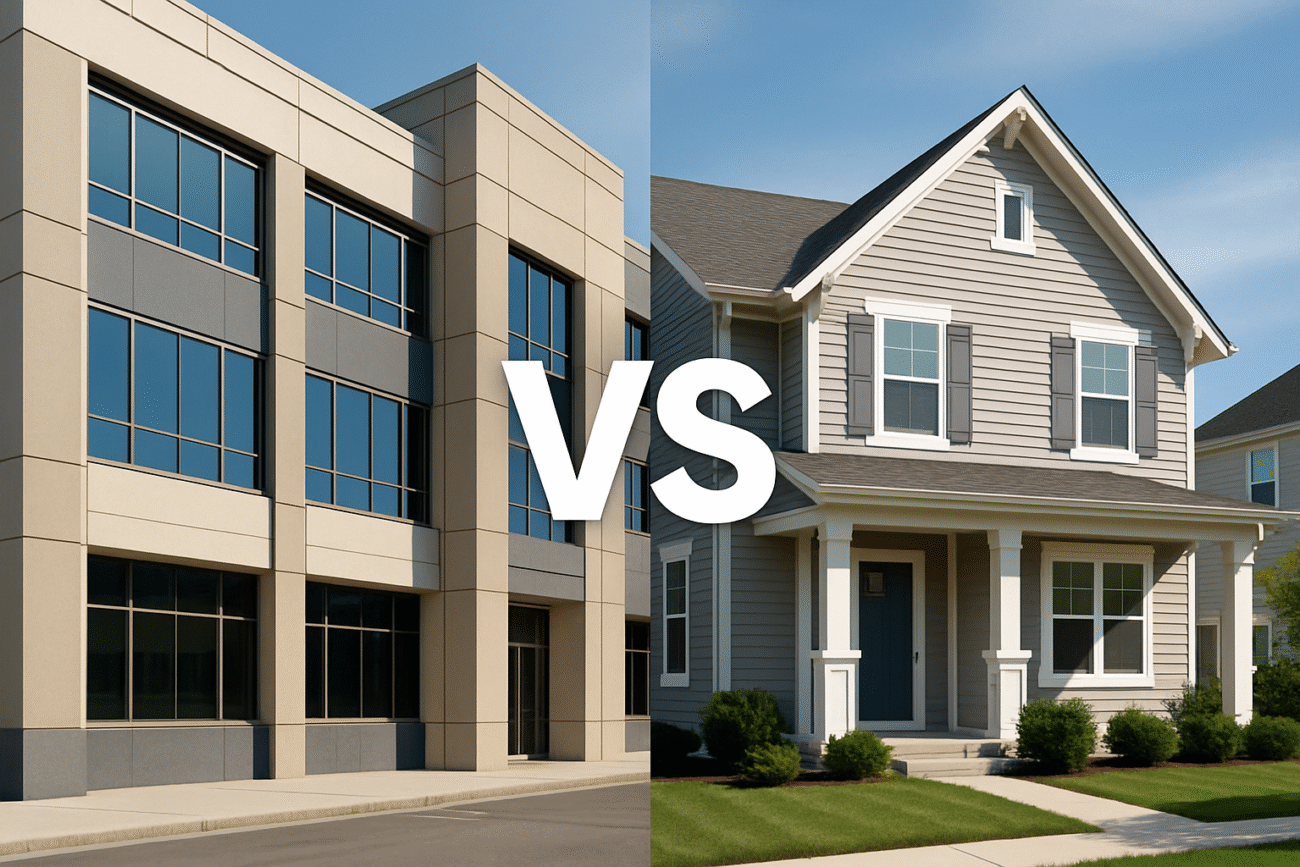Investing in real estate is one of the most reliable ways to build long-term wealth — but choosing where to invest can make all the difference. Two of the most common investment categories are commercial and residential real estate. Each has distinct advantages, challenges, and return profiles, making it essential for investors to understand how they compare before committing capital.
1. Understanding the Difference
The primary distinction between commercial and residential real estate lies in their purpose and usage.
- Residential properties include apartments, villas, and houses where people live.
- Commercial properties include office spaces, retail stores, warehouses, and industrial buildings used for business operations.
While both offer income and appreciation potential, they cater to different investor goals and risk appetites.
2. Pros of Residential Real Estate
Residential properties are often considered the safest entry point for investors — particularly beginners. Here’s why:
- Steady Demand: Housing is a basic necessity, so demand remains resilient even during economic downturns.
- Easier Financing: Banks and financial institutions offer favorable terms for home loans compared to commercial ones.
- Faster Resale: Residential properties generally have a larger buyer pool, making them easier to sell.
- Tax Benefits: Home loans come with interest and principal repayment deductions under tax laws.
However, rental yields are typically lower — ranging between 2% and 5% annually — though they’re balanced by long-term appreciation and stability.
3. Pros of Commercial Real Estate
Commercial investments, on the other hand, cater to businesses — and with that comes higher returns.
- Higher Rental Yields: Commercial properties can offer yields between 6% and 10% annually.
- Long-Term Leases: Tenants often sign multi-year contracts, ensuring predictable cash flow.
- Professional Tenants: Businesses are more likely to maintain property standards and pay rent on time.
- Inflation Hedge: Commercial rents often include escalation clauses, adjusting income with inflation.
The downside? Entry costs are higher, vacancy risks can be greater during economic slowdowns, and maintenance costs may be more substantial.
4. Risk and Return Comparison
While both property types can generate wealth, the risk-return balance differs:
- Residential Real Estate: Lower risk, lower yield, but stable capital appreciation.
- Commercial Real Estate: Higher risk, higher yield, but dependent on economic cycles and tenant quality.
The ideal choice depends on your financial goals. For instance, long-term investors seeking consistent appreciation may favor residential properties, while those aiming for steady cash flow and higher short-term returns might lean toward commercial.
5. Location Matters More Than Type
Regardless of property type, location remains the ultimate driver of success. A residential flat in a growing suburb with strong infrastructure can outperform a poorly located office space. Similarly, a Grade-A commercial property in a business hub can deliver superior ROI over time.
Choosing the right area with reliable demand, robust connectivity, and future development plans is crucial to maximizing returns.
6. Emerging Trends in Commercial and Residential Properties
The lines between commercial and residential investments are beginning to blur, especially with mixed-use developments and co-living/co-working models gaining traction. In thriving urban centers, Commercial and Residential Properties coexist seamlessly — offering investors the opportunity to diversify their portfolios across both categories.
Investors are also exploring hybrid projects that include retail spaces on the lower floors and apartments above, optimizing land use while catering to multiple income streams. This trend is especially visible in metropolitan markets like Bangalore, Hyderabad, and Pune.
7. Which Is Right for You?
Your investment choice should align with your goals, capital availability, and management capacity.
- Choose residential if you prefer stability, easy management, and long-term appreciation.
- Choose commercial if you seek higher rental yields, longer lease commitments, and don’t mind a bit more complexity.
Diversification across both types can also offer balance — blending safety with performance.
8. Final Thoughts
There’s no universal answer to which is “better” — commercial or residential. Each serves a different purpose in an investor’s portfolio. The key lies in understanding market dynamics, evaluating risk, and selecting assets that align with your investment strategy.
By staying informed and adaptable, you can harness the benefits of both segments to create a balanced, resilient, and profitable real estate portfolio that grows with the market.
